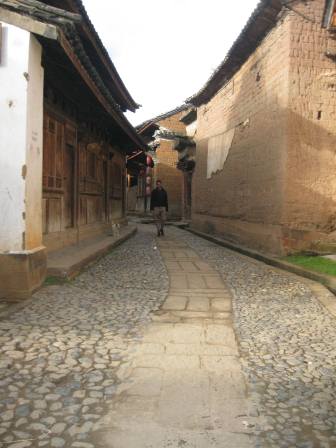
Shaxi's cobbled stre
The following post is an excerpt from Catherine Bodry, a writer for AOL’s Gadling Travel Blog.
Once an important market town on China’s ancient tea-horse road, Shaxi is one of seemingly very few Chinese villages that have retained their original feel. Quiet, with cobblestone lanes and courtyard homes, Shaxi is currently undergoing a “remodel” to restore and preserve its historical market square, inner village, and, eventually, ready the entire Shaxi Valley for tourism. Though only a few hotels and shops currently smatter the tiny village, there’s no way a town like this will stay this quiet for long. You’ll be rewarded by visiting soon, as the vibe is sure to change after the completion of a new highway nearby.
Gadling was lucky enough to visit Shaxi in November on a trip with AsiaTravel, during which we traced parts of China’s tea-horse caravan route.
Shaxi sits roughly between Lijiang and Dali, and was a halfway point for tea and horse traders traveling between southern Yunnan and Tibet. The town experienced its prime from 1368-1911, when it flourished as a way station along the tea-horse trading route. When the last of the caravans passed through in 1949, Shaxi settled into relative isolation. In 2001, the World Monument Fund added Shaxi’s market square to its Watch List of 100 Most Endangered Sites, as the square had its original theater, temple, and guesthouses. All, however, were in danger from neglect and the potential of shoddy restoration. In partnership between the Swiss Federal Institute of Technology Zurich and the People’s Government of Jianchuan County, the first phase of the Shaxi Restoration Project began in 2006, and the village is readying itself for more visitors.
To read full posts from Gadling’s trip to Yunnan, click here.
———-
Contact Catherine Bodry at catherine.bodry@weblogsinc.com. Photo by Gadling.
